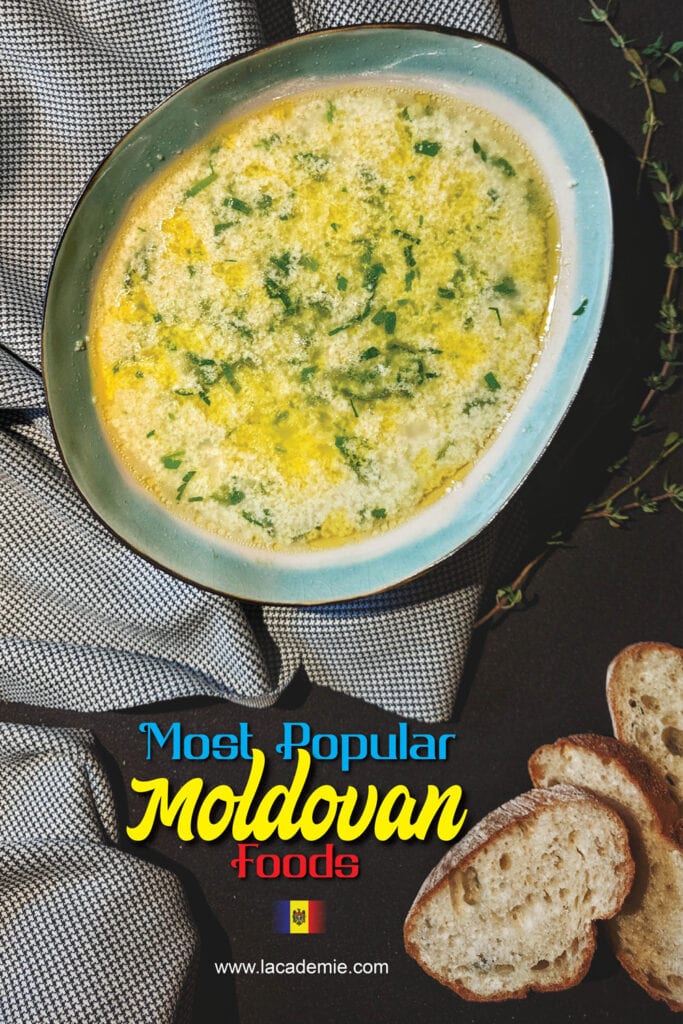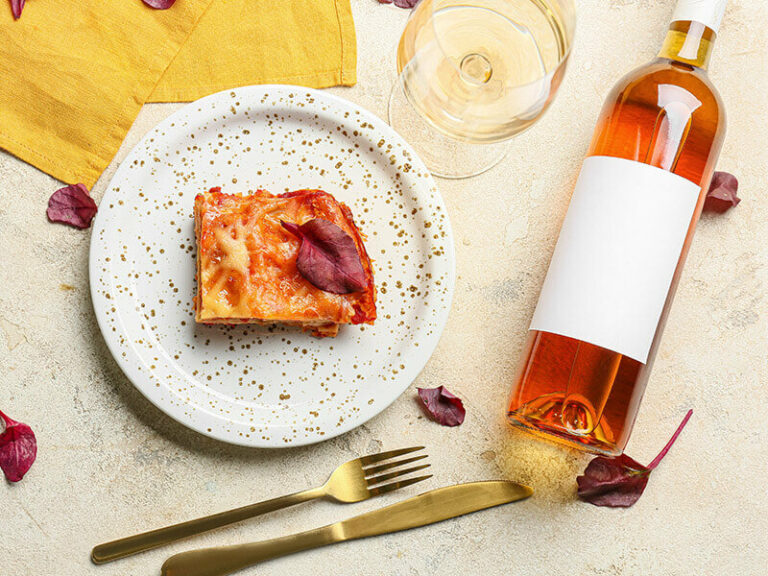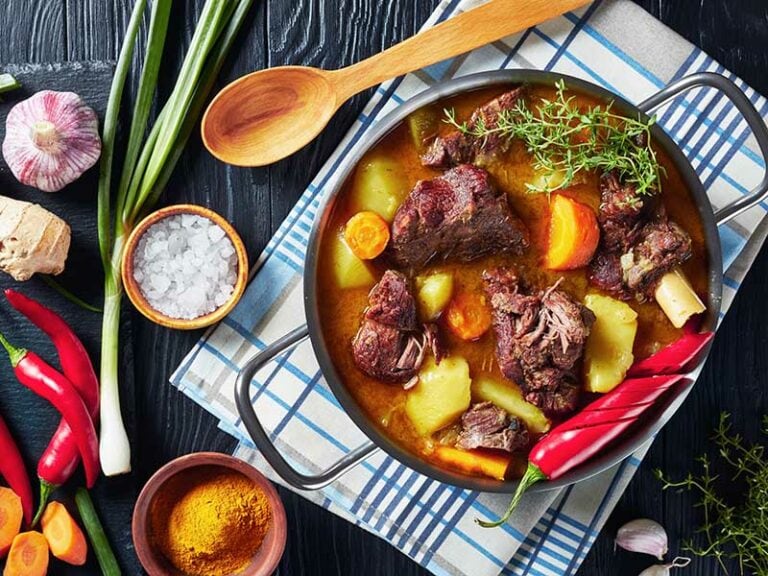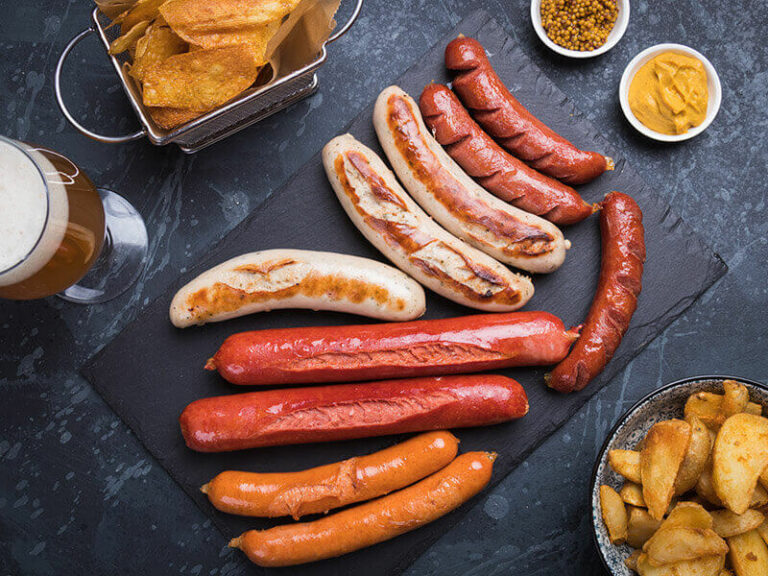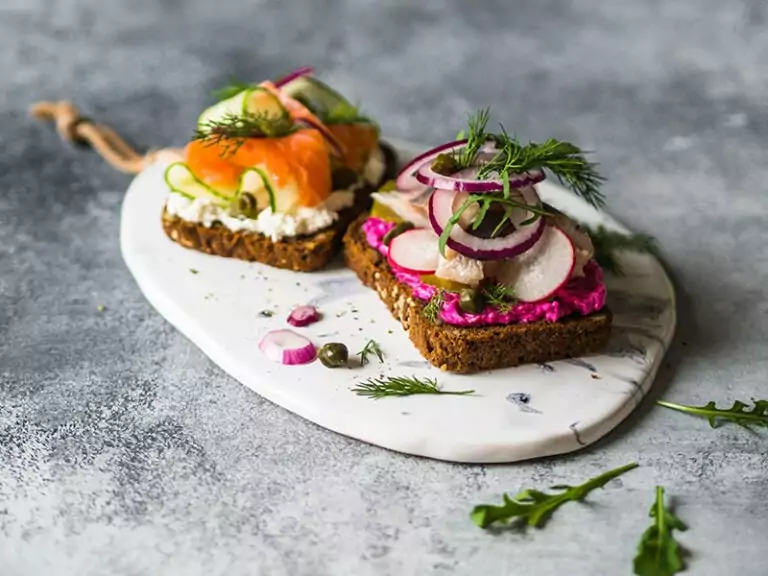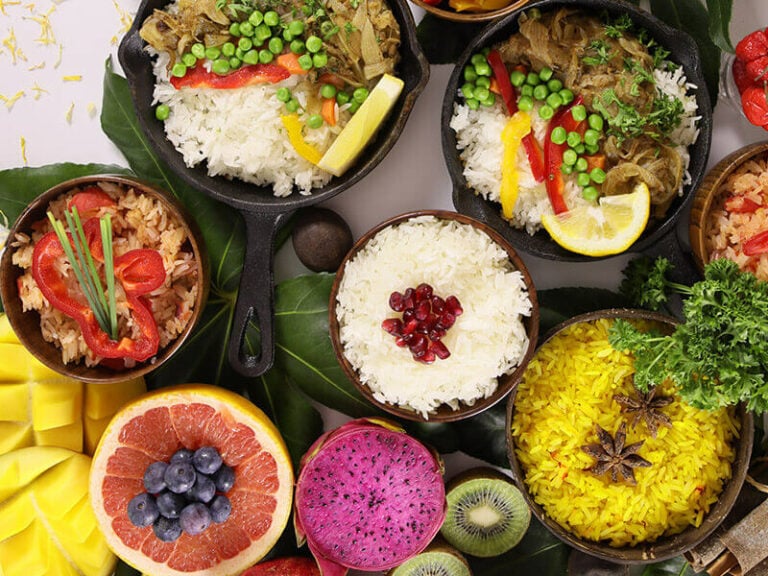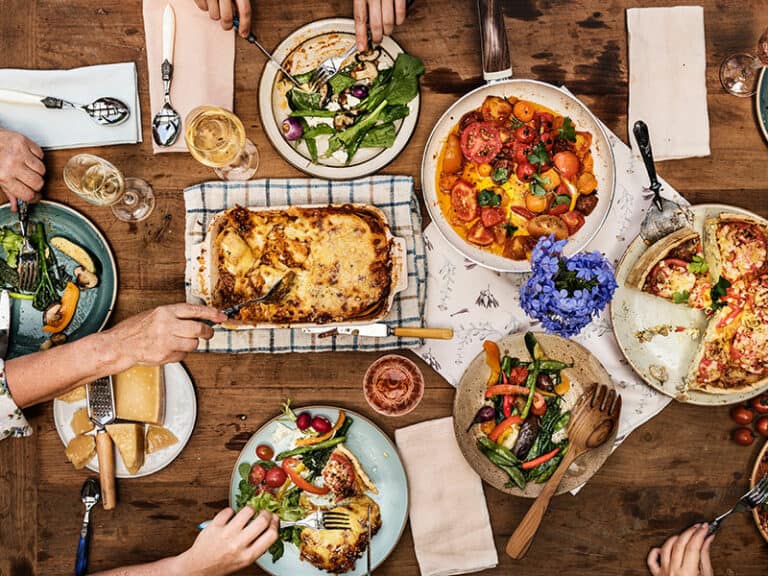The traditional Moldovan foods are pretty similar to Romanian and Ukrainian ones, which makes sense since this small country is located right between these two countries.
Compared to those Eastern European countries, the local cuisine here is indeed lesser-known. Despite that, there are more than enough delectable Moldovan recipes that would satisfy anyone’s culinary preferences.
So when you have the chance to visit Moldova, don’t hesitate to enjoy their traditional dishes or learn how to prepare them yourself. This article will give you some inspiration!
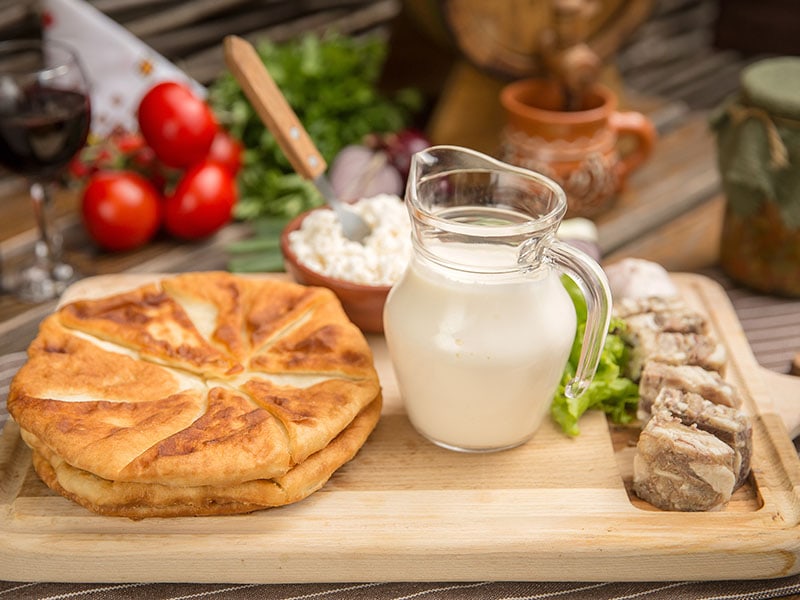
1. Salată de Boeuf – Beef Salad
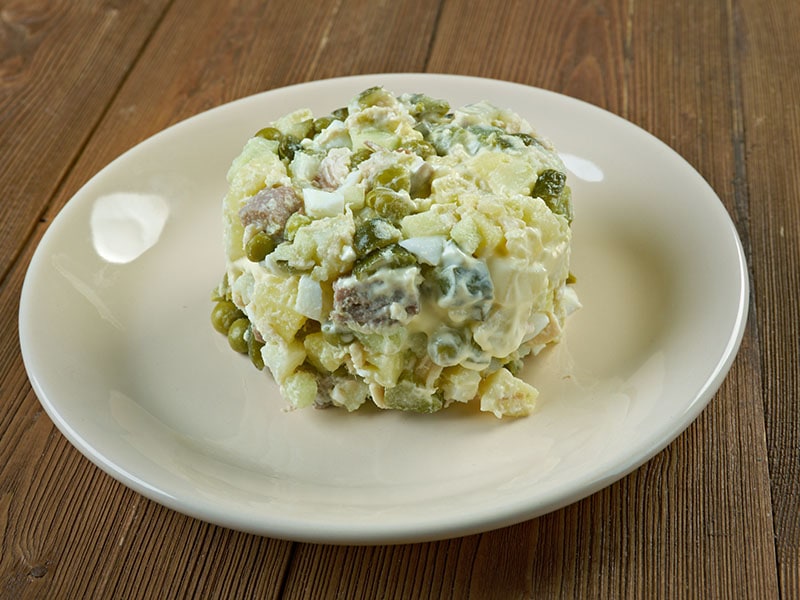
Despite its French-sounding name, Salată de Boeuf was inspired by a Russian delicacy called salat Olivje or Olivier salad. It was invented in the 1860s by Lucien Olivier, a Belgian chef working at the Hermitage museum in Russia.
This salad is frequently served on important occasions such as Easter or Christmas. The term Boeuf means beef – the main ingredient of the dish. However, you can replace it with poultry meat like chicken or turkey.
Besides chopped beef, Salată de Boeuf also contains root vegetables, murături (pickled vegetables), and mayonnaise. The tanginess from the pickled veggies makes it the perfect dish to serve alongside fried meats.
2. Răcitura – Chicken Jelly
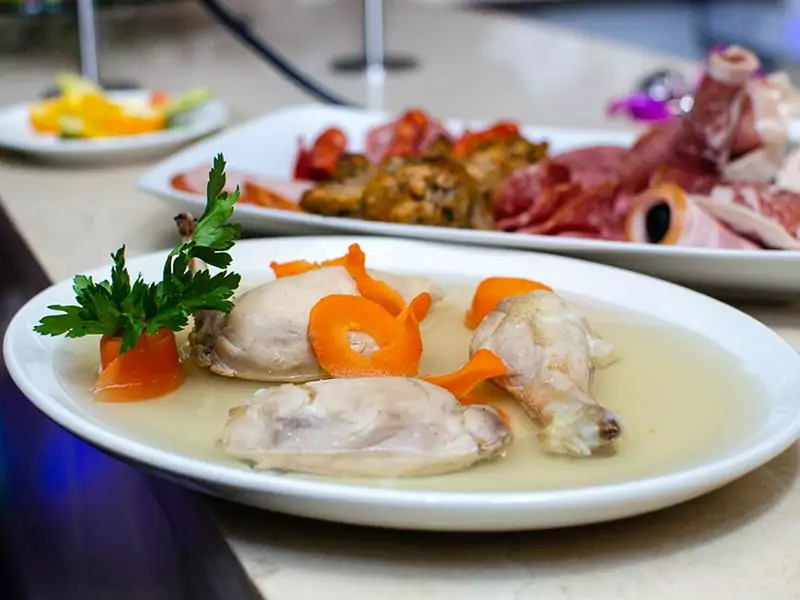
There are two types of people in this world: those who enjoy meat jelly and those who cannot handle it. And yes, this dish does look and sound odd to foreign visitors, but Răcitura won’t be a nationwide popular food if it doesn’t taste good. Overall, it deserves a try!
Although pork jelly (made with pig’s trotter) is the most well-known variation of meat jelly, Răcitura is usually made from turkey or chicken meat. This name is derived from the Romanian word rece, meaning cold.
Looking for a tutorial for a homemade Răcitura? Check this out!
3. Tochitură – Pork and Sausage Stew
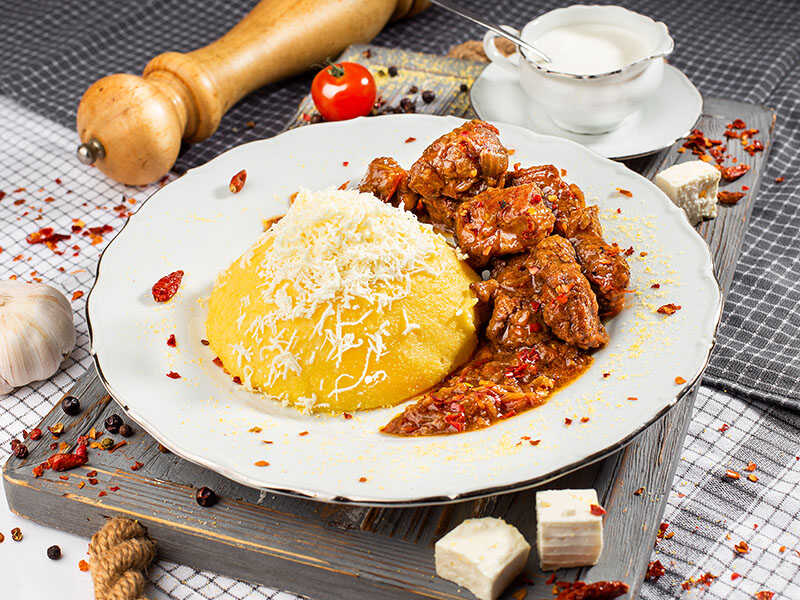
The name Tochitură derives from the verb a topi, which means “slow-cooked meat in fat”. This term literally describes the cooking process of this traditional stew.
To make Tochitură, you must first cook small pork cubes over low heat in their own fat, making them more tender and flavorful. Then pair it with Mămăligă, sunny-side-up eggs, cheese, and perhaps a glass of wine.
According to your preferences, this delicious Moldovan lunch dish can be cooked with or without tomato sauce. You can also choose whatever kinds of meat you like, such as beef, chicken or lamb.
4. Zeamă – Chicken Soup
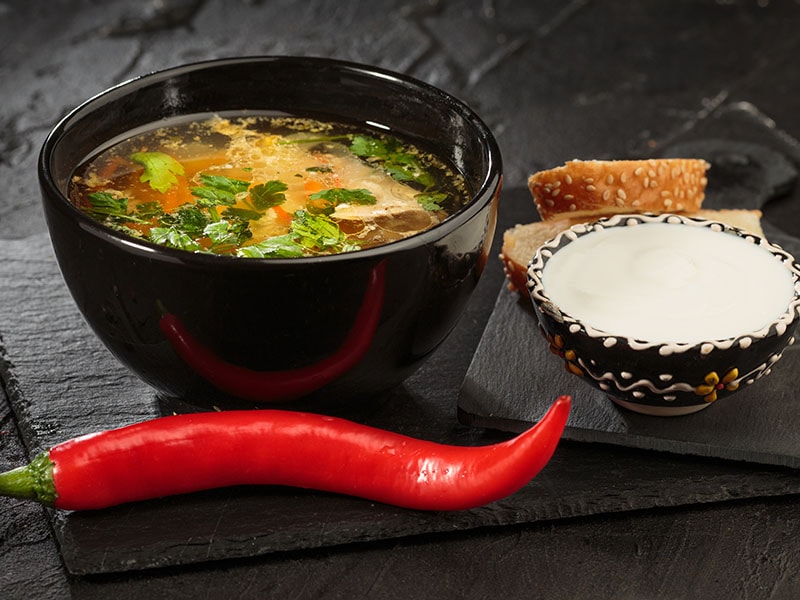
If I have to rank every chicken soup from around the world, Zeamă is definitely on the top-tier list. This comfort food is loved across the country, maybe because it’s a well-known hangover remedy, and the Moldovans drink quite a lot of wine.
Zeamă may be eaten at any time of the day but is most commonly served at lunch. It usually comes with some cornbread or sour cream.
In terms of ingredients, this sour and savory chicken soup has onions, sweet peppers, and various veggies and herbs. Some even add thin egg noodles to it.
The sourness comes from borș acru (fermented wheat bran juice). But since this ingredient is relatively inaccessible, people sometimes use sauerkraut juice or lemon juice instead.
If you’re looking for the ultimate hangover cure, check out this Zeamă recipe!
5. Pârjoale – Meat Patties/Meatballs
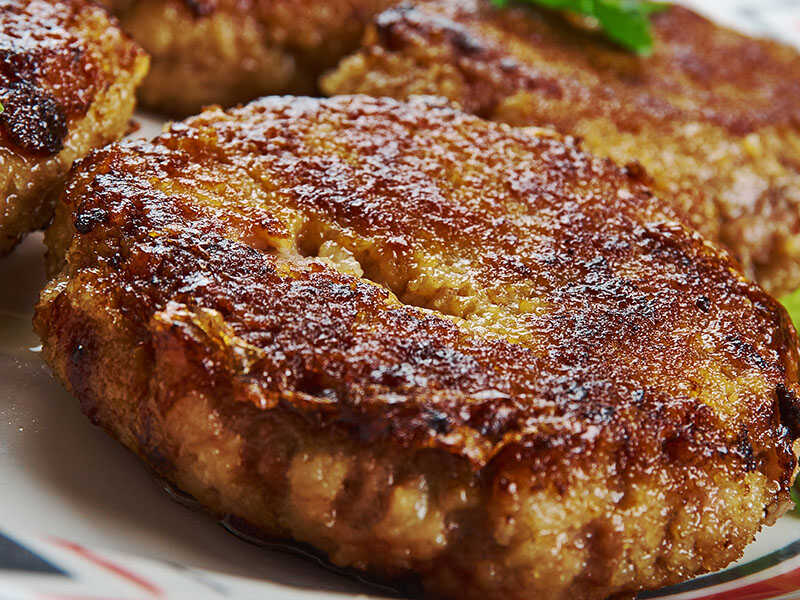
Every country has its version of meatballs, and Moldova is no exception. The meatballs in this country are made from minced pork and beef (occasionally lamb or chicken).
The meat will be mixed with eggs, soaked bread slices, potatoes, and chopped onions. Then it’s time to coat them in breadcrumbs and fry them. Tomato sauce can also be used to marinade them.
In Moldova, the locals usually eat them with whole-grain mustard on a slice of rye bread.
6. Chiftele – Flat Meatballs
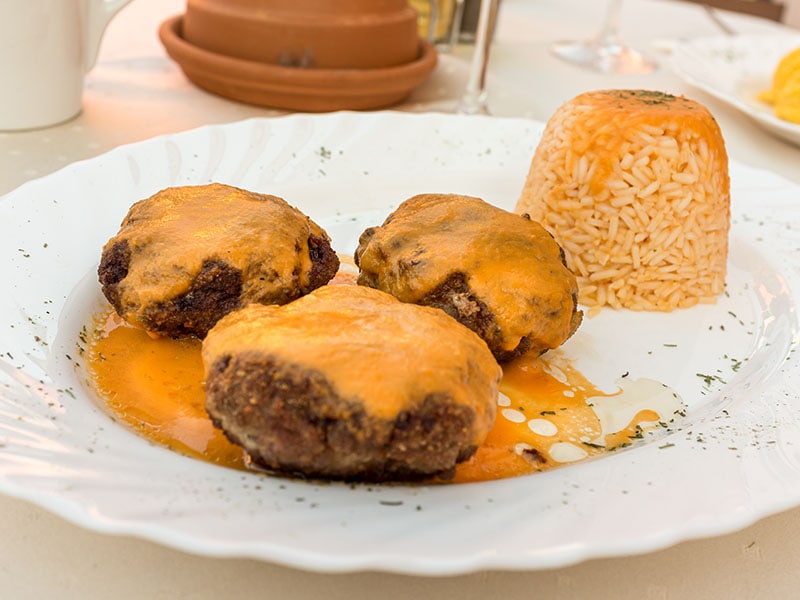
Chiftele and Pârjoale are both well-known versions of deep-fried meatballs. They look almost identical, so many foreigners think they are the same dish. However, these two dishes are easier to tell apart than you think.
Compared to Pârjoale, Chiftele are flat and round. These flavorful meatballs are often paired with mashed potatoes, creating a dish called Chiftele cu Piure (meatballs with mashed potatoes). Chiftele and Pilaf is also an excellent food combo.
7. Pește Prăjit – Fried Fish
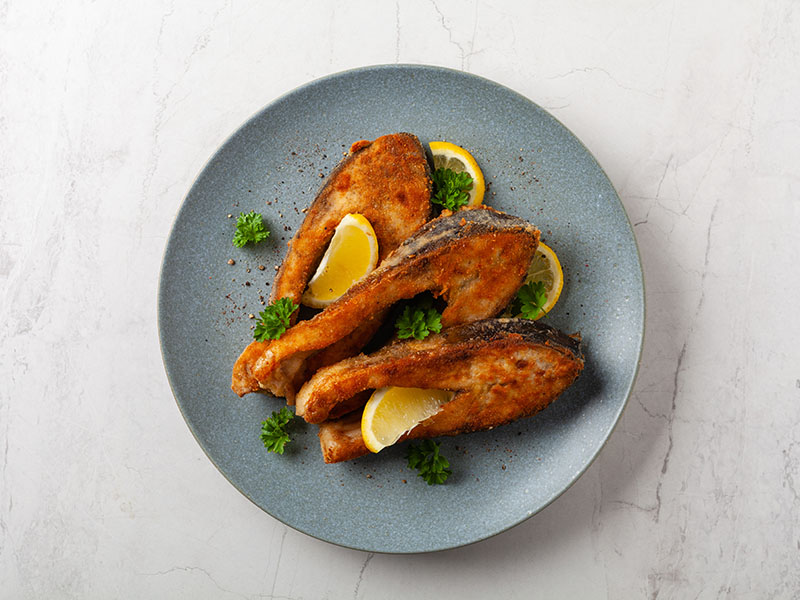
If you are in the mood for some seafood, maybe you should order Pește Prăjit, a deep-fried fish dish. This delight is probably one of Moldovan cuisine’s most delectable seafood dishes.
You could use any fish you want for this dish. However, the locals often go for Crucian carp, a nutrient-rich river fish. Pește Prăjit tastes best when paired with Mămăliga and Mujdei (traditional garlic, vinegar and oil sauce).
8. Mămăligă – Cornmeal Porridge
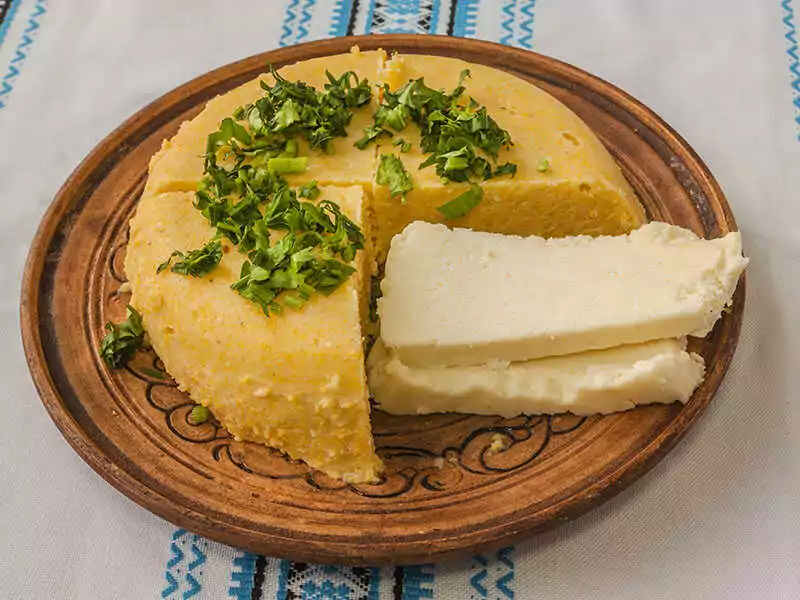
Mămăligă is a traditional Romanian porridge that is also popular in Moldova.This dish is exceptionally humble as peasants created it in the olden days as a way to keep their families fed.
The block of Mămăligă was created by simply cooking cornmeal with a bit of water in a round-bottomed kettle. It was then cut into smaller pieces by a string and acted as a bread substitute for those who couldn’t afford it.
Nowadays, Mămăligă is enjoyed with butter, sour cream, cheese, or even meat. Cornmeal is still an essential ingredient since it gives the dish the signature bright yellow color.
9. Sarmale – Stuffed Cabbage Rolls
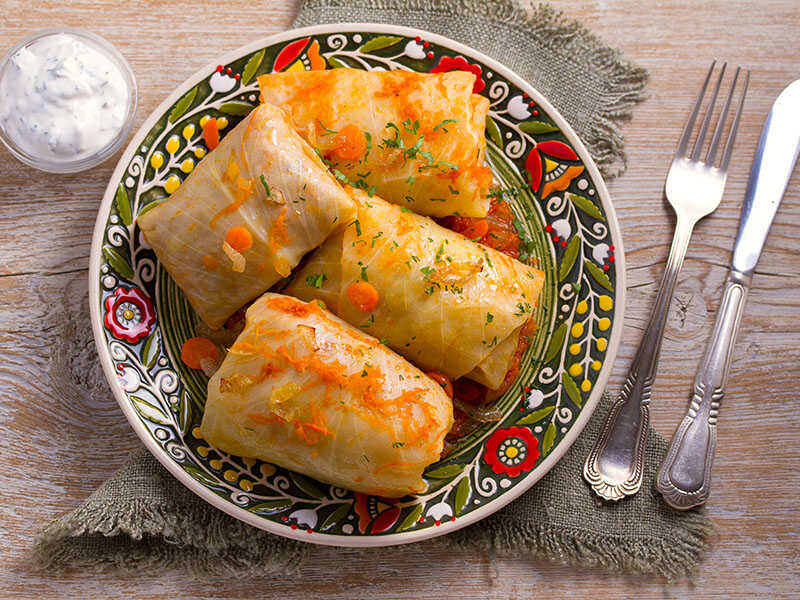
Sarmale is made by wrapping minced meat, rice, and herbs in a cabbage leaf. These stuffed rolls will then be cooked in tomato sauce and topped with a bit of sour cream.
Sarmale is originally from the Ottoman Empire, and it is a typical dish in the Middle East, the Balkans, Central Europe, and South Caucasus.
The dish is an irreplaceable part of the everyday life of the Moldovan people, and some consider it one of the best Moldovan dinner dishes. Sarmale even makes its appearance during major parties and celebrations in this nation.
10. Ardei Umpluți/Chiperi Umpluți – Stuffed Bell Peppers
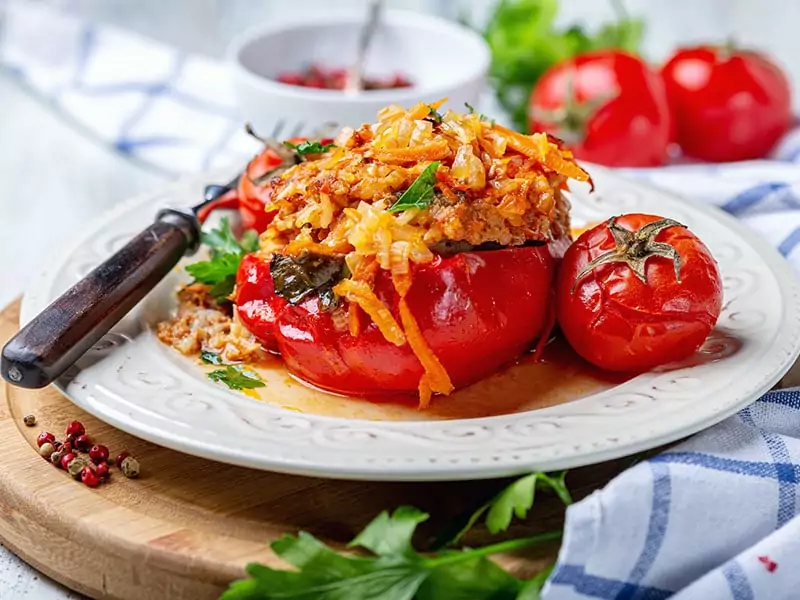
Sharing a similar filling with the famous Sarmale, Ardei Umpluți is another well-loved dish by the Moldovans. It is made by stuffing bell pepper with a mixture of rice, vegetables, and meat and served with sour cream.
“Ardei Umpluți” or “Chiperi Umpluți” can be translated as filled or stuffed peppers. The popularity of this dish is not a joke as well, judging by how it has its own variants in almost every other Central and Southeast European country.
11. Borș/Borscht – Beet Soup
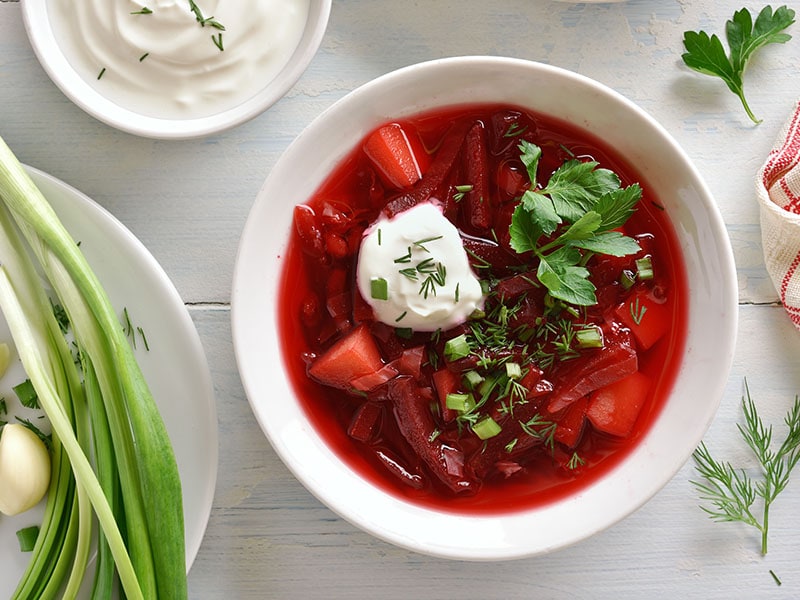
Borș, also known as Borscht, is the famous Moldovan beetroot soup. Even though Ukrainian popularized the dish, it still holds an important place in other Eastern European countries, especially Moldova. Borș is even considered a staple home-cooked dish in this country.
It was initially an old soup made from pickled stems and leaves. This recipe was spread through Eastern Europe, the former Russian Empire, and even North America. There is a particularly famous version of this dish called Šaltibarščiai in Lithuanian cuisine.
As expected in home-cooked food, there are no fixed recipes or ingredients to follow. The Moldovans simply add whatever vegetables they prefer along with beetroot or fermented beetroot juice for a hint of sourness and a distinctive, vibrant red hue.
Already fell in love with this awe-inspiring soup? Make some Borș at home with this recipe!
12. Sfințișori/Mucenici – Sweet Bread
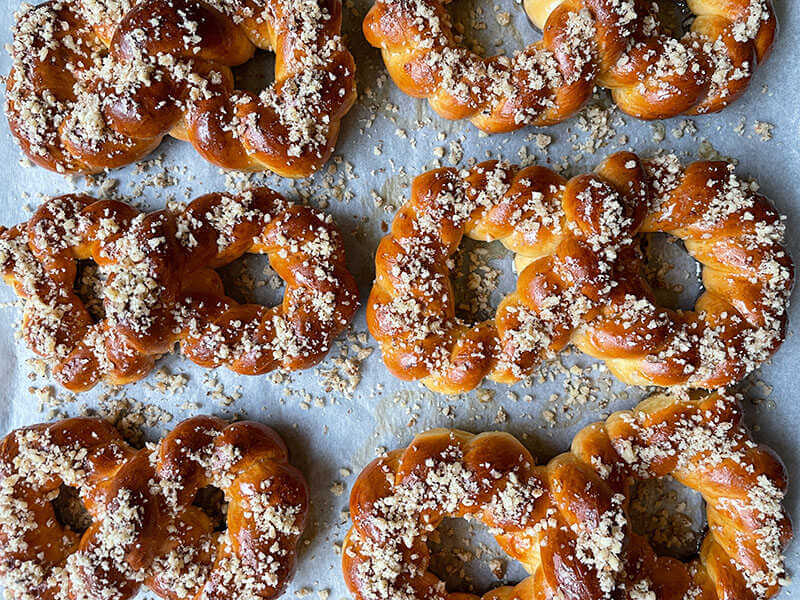
Sfințișori, also known as Moldavian Martyrs, is a typical dessert pastry topped with honey and almonds. This dessert will surely satisfy your sweet craving after the first bite with a crispy and sticky exterior and a light and fluffy interior.
The remarkable thing about Sfințișori is that it’s shaped like an eight, referring to March 8th, the day before the Christian feast of the 40 Martyrs. During this traditional holiday, people often bake 40 pieces of bread and enjoy them together.
13. Plăcinte – Cheese Pies
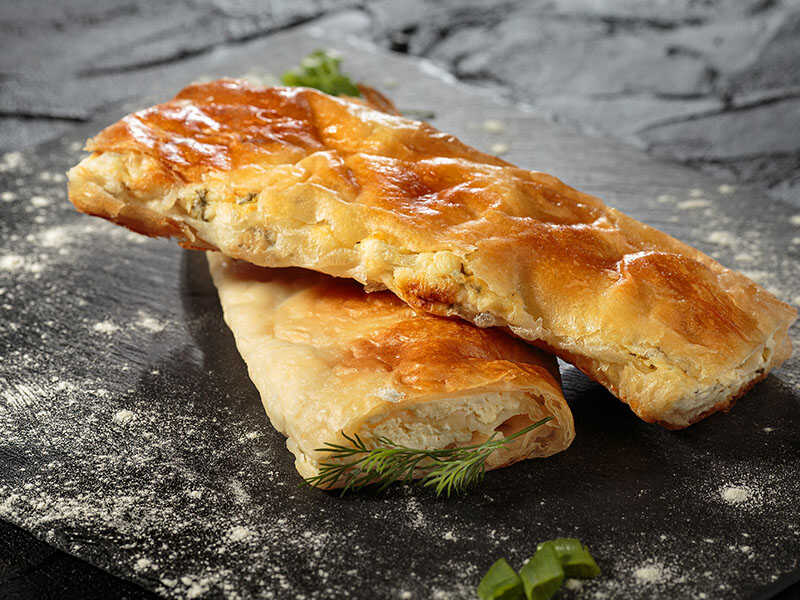
Plăcinte is, without a doubt, a must-try dessert in this country. It doesn’t matter whether you’re young or old; no one can resist these addictive sweet treats!
Although this dessert originated in Rome in ancient times, it is still one of the most well-known and well-loved Moldovan breakfast recipes. In fact, Plăcinte is so popular that you can easily find them at every restaurant or bakery across the country.
The fillings of this dessert may be the factor that makes these pies become a signature in Moldova. The sweet version can contain pumpkin, apple, and cherry. But if you’re suddenly in the mood for something savory, you can fill it with cottage cheese, potatoes, or cabbage.
14. Smetannik – Sour Cream Cake
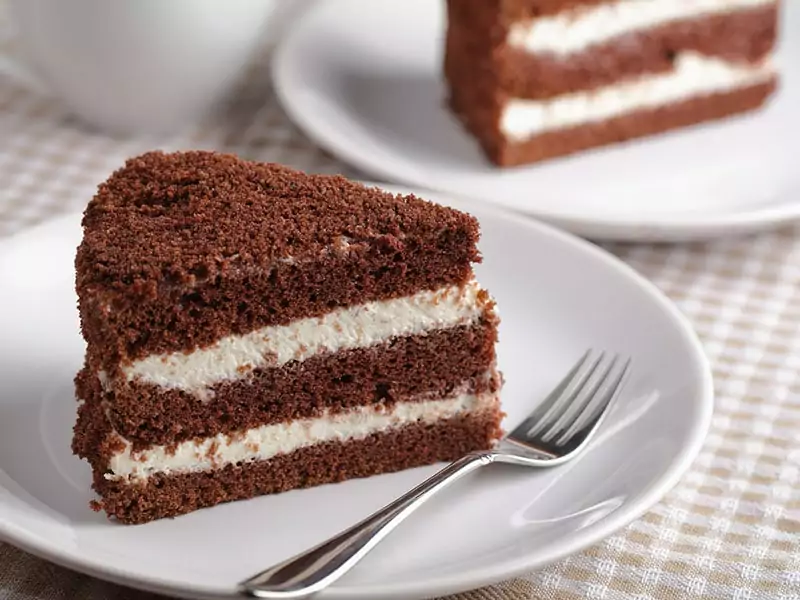
Despite its origins as a famous Russian dessert, Smetannik has grown in popularity in Moldova. Some Moldovans even said they love this cake more than the Russians.
Smetannik is a delicate and luscious multi-layer cake filled with sour cream and topped with tangy white icing. If you want to make this dessert at home, don’t forget to sweeten the sour cream and flavor it with vanilla.
The locals love to enjoy this treat during birthdays and weddings parties. It’s also available in most supermarkets, bakeries, and restaurants across the country.
15. Cușma lui Guguță’ – Guguță’s Hat
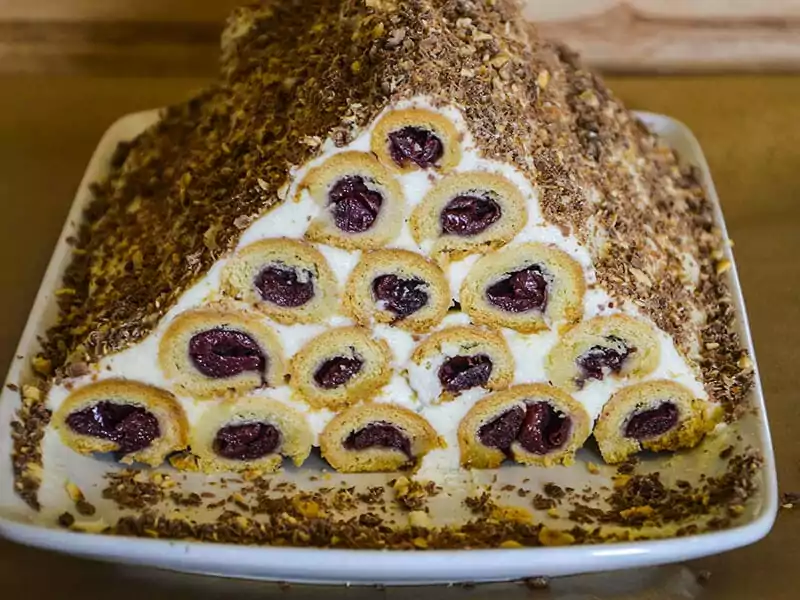
You might be wondering, why is this dessert named after a clothing item? This dish consists of multiple layered crepes to form the shape of the cap of Guguță, a famous folktale character in Moldova.
Besides the fascinating backstory, the flavor of this dessert is also incredible. With layers of sour cherries and whipping cream, Cușma lui Guguță’ has the perfect balance between sweet and sour. The dark chocolate flakes sprinkled on top also add a nice touch.
16. Walnut Stuffed Prunes
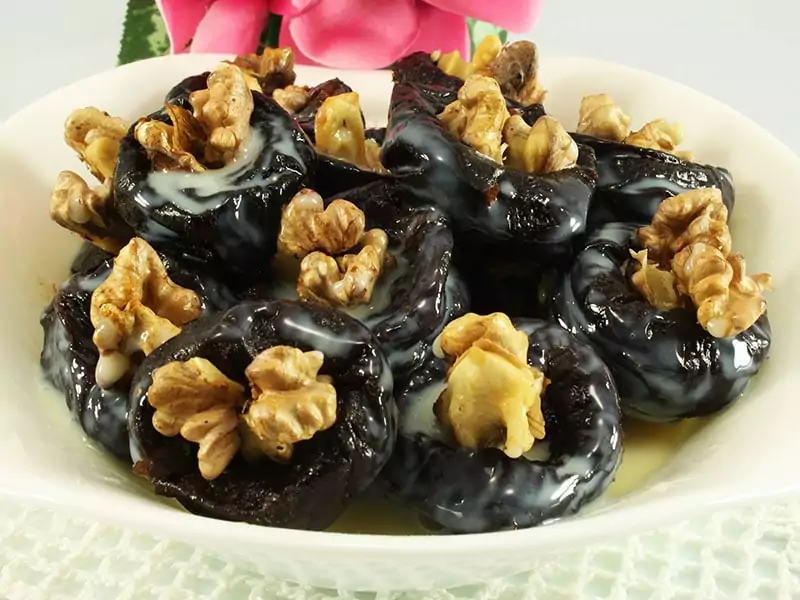
If you are not in the mood for cakes or sweet buns, try some walnut stuffed prunes instead. These stuffed walnuts are sweet, nutty, and most importantly, super healthy. Many said they could provide the body with beta carotene and vitamin K.
To make this nutritious summertime treat, just soak the dried prunes for a few hours in water before stuffing them with toasted walnuts. The stuffed prunes can then be served in a glass and topped with sugar and whipping cream.
17. Cozonac – Easter Sweet Bread
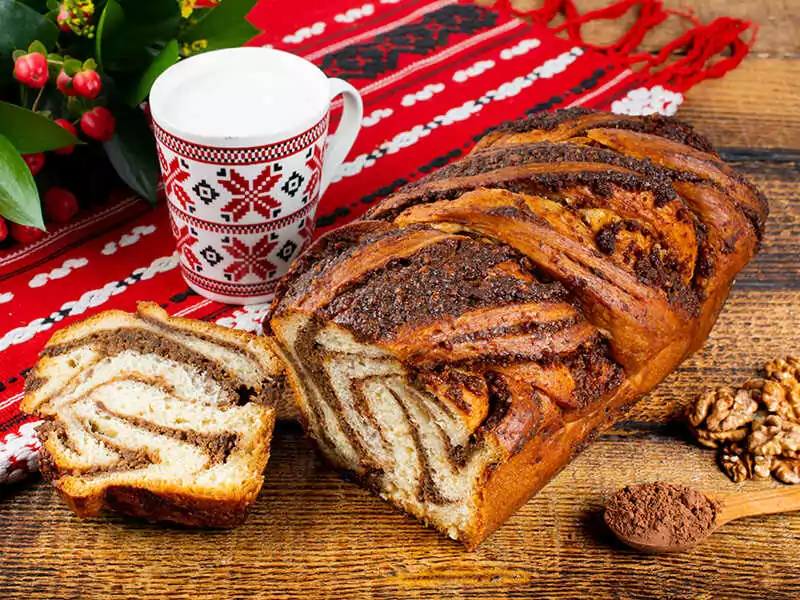
Here’s another delectable delicacy that I know you would love – Cozonac! This delicious bread is traditionally made for Easter and other significant festivals in Romania and Moldova.
The ingredients for this Easter bread vary depending on the region. While the Moldavians like to add lemon zest to the dough, the people from other countries opt for raisins, shredded orange, or hazelnuts.
This citrus-scented sweet dough is wrapped around a nutty filling and baked into a spiral form for a festive appearance and delicate texture. Besides Easter, Cozonac is also the go-to dish for major holidays like Christmas and New Year’s Eve.
18. Pască – Easter Bread with Cheese
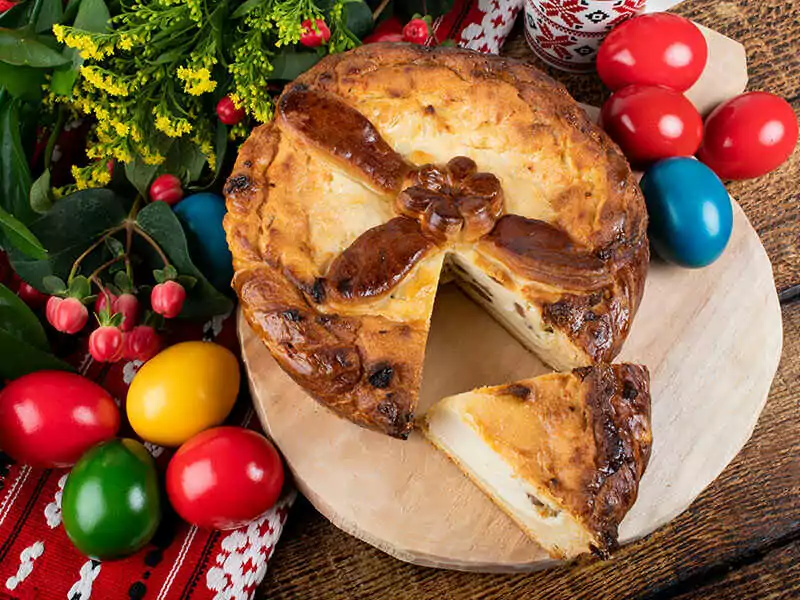
Pască is made with the same dough as Cozonac, but it has sweet cheese and raisins filled within. Therefore, Pască’s flavor is like a cross between a cheesecake and a panettone, with a soft exterior and a creamy interior.
Similar to Cozonac, Pască is also a staple of Moldovan Easter celebrations. The swirl of yellow and white inside the bread is associated with Christian symbolism. The yellow swirl represents Jesus’s resurrection, while the white represents the Holy Spirit.
19. Papanași – Cheese Donuts
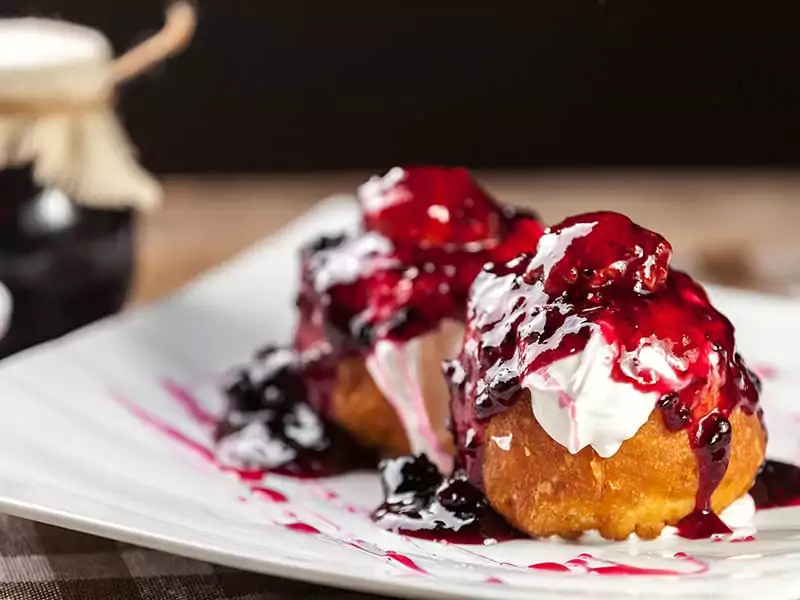
The term papa in Papanași means “meal for youngsters”. However, this does not imply that Papanași is only for children. Young or old, everyone has the right to enjoy this cheesy treat!
Even though I’m not a massive fan of deep-fried desserts, I can’t deny how incredible these cheesy donuts taste. The sourness of sour cream and the richness of cottage cheese all match so well with the crunchy texture of the dough balls.
In Moldova and Romania, the locals usually pair these donuts with some jam, the most popular one being currant jam or blueberry jam.
20. Cornulețe – Rugelach
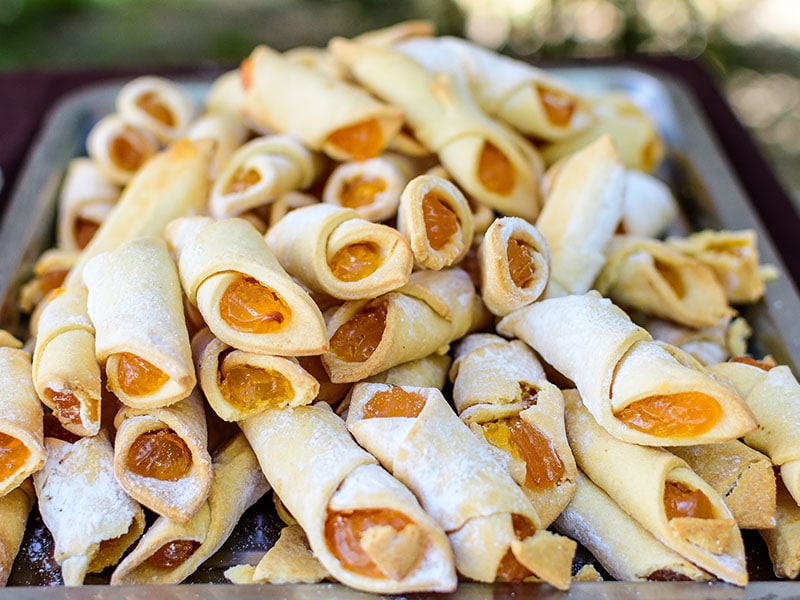
Last but certainly not least, Cornulețe is another traditional Moldovan sweet treat that you must try at least once. These crescent-shaped Moldovan pastries are loaded with jam, Turkish delight, chocolate, or walnuts. Whatever filling you can think of, they got it!
Cornulețe often makes its appearance during the Christmas season as well as other special events. But these delights are also available at the local bakeries year-round, so be sure to grab some when you can.
Moldovan Cuisine Deserves The Spotlight!
Moldovan cuisine is unique and varied, combining foods from several countries and religious beliefs. Many traditional dishes are adapted from neighboring nations like Romania, Ukraine, and even Russia.
Due to the influence of Western cuisine and culture, some classic Moldovan foods have become less common here. However, the recipes for them are still meticulously passed down through generations.
When you set foot on Moldova land, you can see many Western fast-food restaurants. But after reading this, I hope I have inspired you to explore the multifaceted Moldovan cuisine. Please give this post a like and share it with your pals if you enjoy it!
Also, do you have any further questions about Moldovan foods and cuisine? Let me know in the comment section below. Thank you for reading, guys. I’ll see you all in the next article!
